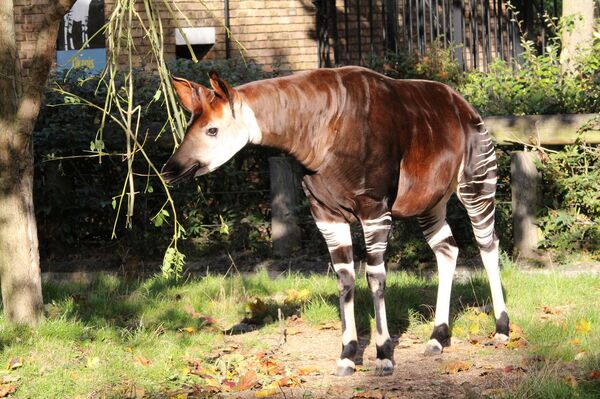The world's tallest land animal is known for its distinctive neck, which is considered unique. Unlike long-necked birds, giraffes don't have additional bones in their spine; their neck contains seven vertebrae, the same number humans have, but each is elongated. In addition, to pump blood two meters up from the chest to the brain calls for a turbo-charged heart and twice the blood pressure of other mammals. The animals also boast a special safety mechanism which allows them to bend down for a drink and raise their heads again without getting dizzy.
However, the way they have grown their necks has been a puzzle for biologists (including Charles Darwin) for a long, long time.
A new study sheds some light on just how giraffes' necks stretched to such heights. An international team of scientists from the UK, US and Tanzania have, for the first time, analyzed the giraffe genome, as well as the genome of the only other surviving member of the family Giraffidae, the okapi. To make a long story short, the analysis — genome sequencing — highlighted 70 genes that show signs of adaptions between the two close relatives, and around half of these genes likely play a key role in coding proteins that regulate the skeletal, muscular and nervous system development that was essential in creating giraffes' necks.
The researchers singled out one gene in particular, FGFRL1, which is critical for promoting neck growth. The scientists plan to put the giraffe's version of the FGFRL1 gene into mice to see whether it affects their development, according to an author of the research, Douglas Cavener of Pennsylvania State University. Keep your eyes wide open so that you won't miss their long-necked mouse!





